LAWN FERTILIZER
The Proper Lawn fertilizer is best determined with a soil test. Marties can send your soil sample off to select the proper amendmants such as lime, N P K mixes and any micros you may need for a beautiful healthy lawn.
Lawn Fertilizer @ Marties
Green Grass on the Way! Come see us in Elk River
or Monticello for all of your Lawn Care needs!
Tru Green has a really complete article on fertilizer we have shared here:
Healthy lawns start from nutrient-rich soil. Your lawn draws nutrients from the soil up through its roots and uses those nutrients to grow into lush, dense grass. That’s where fertilizer comes in. Proper lawn fertilizer applications boost your lawn’s ability to grow beautiful, thick grass. Our guide to lawn fertilizer explains how to choose the right fertilizer for your lawn, read the label, and safely apply the fertilizer to your lawn.
Of course, finding the right combination of fertilizers and getting the timing exactly right can be a bit of a hassle. If you decide you don’t have the time to decode fertilizer labels and spend hours behind a fertilizer spreader,
Benefits of fertilizing your lawn
You might wonder why you need to fertilize your lawn. After all, you’re already watering and mowing it regularly to promote healthy growth. However, an unfertilized lawn must rely solely on the nutrients currently present in your soil. This can vary greatly between lawns even in similar climates or soil types. Soil nutrients may have been lost when your home was built or due to improper lawn care from a previous owner.
Properly fertilizing your lawn not only encourages your grass to grow more evenly and efficiently but also helps reduce the appearance of weeds in your grass, ultimately affecting the duration for grass to grow
Developing a fertilizer application plan for your lawn leads to grass with rich, green coloring and dense coverage across your yard.
Choosing the right lawn fertilizer
There are two main types of fertilizers: controlled-release and quick-release. Controlled-release fertilizer is granular beads of fertilizer that release nutrients over a longer period of time, while quick-release fertilizer is cheaper and is typically water-soluble beads or a liquid that releases nutrients faster. Both types of fertilizer can either be organic or synthetic (inorganic).
When you stop by your local lawn and garden store, you’ll notice an almost endless display of lawn fertilizers for sale. From “
weed and feed to lawn food, fertilizers aren’t lacking in variety. With all of these options, you’re probably wondering how you go about choosing the best lawn fertilizer available.
The reason you’ll see so many varieties of fertilizer reflects the numerous combinations of nutrients individual lawns need to maintain healthy growth.
Most common lawn nutrients
Almost all lawn fertilizers contain one or more of the three major nutrients required for a lawn’s optimum growth. The nutrients Nitrogen (N), Phosphorus (P), and Potassium (K) are most commonly found in grass fertilizers. Not only are they important to plant growth, but they are also usually the most deficient in natural soils. Each nutrient serves a different purpose for promoting ideal plant growth.
Nutrient NameKey BenefitsNitrogen (N)Is responsible for rapid growth
Determining what nutrients your lawn needs
There are two main factors that contribute to what nutrients your grass needs. One is the type of grass that is planted in your yard. The other is the existing nutrients available naturally in your lawn’s soil. Both of these factors play an integral role in determining which nutrients your fertilizer should contain.
Type of grass—Grasses come in warm-season and cool-season varieties. A warm-season grass that thrives in a Southern state needs different amounts of nutrients than a cool-season grass that grows best in the Pacific Northwest. Knowing what types of grass are planted in your yard can help you choose the right lawn fertilizer.Soil properties—Your soil has one of the largest effects on your fertilizer needs. It’s generally recommended that you perform a soil test to determine which nutrients your soil lacks and the pH level. These simple tests give you a detailed breakdown of your lawn’s soil by collecting a sample and mailing it to a lab.
Translating lawn fertilizer labels
Lawn fertilizer companies don’t always do a fantastic job of making their fertilizer labels understandable. When you buy almost any bag of fertilizer, you’ll see three numbers listed somewhere on the label, such as 20-20-20. These numbers represent the amount of Nitrogen (N), Phosphorus (P), and Potassium (K) in the fertilizer, in that order. Many brands of lawn fertilizer won’t list the nutrient names, so it’s important to remember that the amounts will always be listed in the order of N-P-K.
The numbers themselves represent the percentage of weight of each nutrient. For example, if a bag of fertilizer says 20-5-5 and the bag weighs 50 pounds, there are 10 pounds of Nitrogen in the bag and 2.5 pounds each of Phosphorus and Potassium.
20% (first number in N-P-K sequence) X 50 (pounds of fertilizer in bag) = 10 pounds of Nitrogen5% (second number) X 50 pounds = 2.5 pounds of Phosphorus5% (third number) X 50 pounds = 2.5 pounds of Potassium
Lawn fertilizer plans are generally developed on how many pounds of Nitrogen is required per 1000 square foot of lawn per year. If you don’t feel like calculating out the exact amount of nutrients needed by your lawn, there is a simple trick to finding a good grass fertilizer. Looking at the fertilize number sequence, you may notice some have a large amount of one nutrient and lower amounts of others. In the example above, there is a higher percentage of Nitrogen than Phosphorus or Potassium. This is the ratio you typically want for growing grass. Aim to purchase a fertilizer with a higher number for Nitrogen and then a lower number for Phosphorus and Potassium.
Disadvantages of Phosphorus
Although Phosphorus is an important nutrient that all plants need to survive, studies have shown that using Phosphorus in lawn fertilizers may contribute to unnecessary runoff into waterways. This can lead to increased algae blooms that lower the water’s recreational value and may harm wildlife such as fish by depleting oxygen levels in the water.
Phosphorus can still provide a lot of benefits to your lawn, but it is important to use it correctly. Avoiding applying fertilizer around ponds, drainage systems, or other water sources is the number one way to prevent Phosphorus runoff. Additionally, you can test your soil before applying fertilizer to determine the Phosphorus levels. If your lawn has plenty of Phosphorus already, there’s no need to add more, and you can choose a Phosphorus-free fertilizer.
Many companies have stopped adding Phosphorus to their commercial-available fertilizers. Local laws may restrict your use of Phosphorus as a lawn fertilizer. Be sure to check your local city, county, and state laws for Phosphorus restrictions.
Types of Nitrogen fertilizers
Since lawns generally need Nitrogen more than the other major nutrient, lawn fertilizer companies have developed various fertilizer types to effectively get Nitrogen into your soil. Generally, Nitrogen can be applied in controlled-release (also known as slow-release) or quick-release applications. Our chart below looks at the advantages and disadvantages of each type.
Fertilizer typeDescriptionAdvantagesDisadvantagesControlled-releaseGranular beads of fertilizer that release nutrients into the soil over a period of 6–8 weeks.– Uniform application and growth
– Less loss of nutrients through the soil or air
– Less likely to burn the lawn
– Less frequent applications– Less effective on cold soil
– More expensive
– Nutrients aren’t readily available, so it will take longer to see a change in your lawn’s colorQuick-releaseEither a liquid concentrate or water-soluble beads that immediately release nutrients into the soil when watered.– Fast response from grass; get a greener lawn faster
– Less expensive
– Provides immediate nutrients, even when the soil is cold– More likely to burn grass
– More likely to lose nutrients in air or water and deteriorate soil quality
– Need more frequent applications
Should I use organic or inorganic fertilizer?
In addition to controlled-release and quick-release lawn fertilizers, there is a distinction between organic fertilizers and inorganic fertilizers.
Organic fertilizers—These are natural materials that provide necessary nutrients to your lawn. Though a wide category, most organic (carbon-based) materials from plants and animals contribute to the nutritional makeup of your soil. Examples include manure, compost, bone meal, and alfalfa.Inorganic fertilizers—Also known as chemical fertilizers, inorganic fertilizers are synthetically produced to provide an exact amount of nutrients based on the chemical makeup.
It’s important to look at the pros and cons of each type of fertilizer when choosing the right fertilizer for your lawn. We’ve put together a chart with the advantages and disadvantages of both organic and inorganic fertilizers. Often, the best choice for a lawn is a combination of fast-acting inorganic fertilizers and slow, steady nutrients from organic fertilizers.
Fertilizer typeAdvantagesDisadvantagesOrganic– Won’t burn lawns
– Slow and steady nutrient release
– Contains a wide range of trace minerals and balanced nutrition for your grass
– Helps soil life by breaking down soil matter and encouraging aeration (explore our
in-depth guide on lawn aerators) from earthworms– Less nutrient release in cooler temperatures
– More expensive
– Dependent on microorganisms in the soil
– Animal manure or other homemade organic fertilizers may not be completely broken down, causing harmful runoffInorganic– Commonly available
– Formulas varied for exact lawn needs
– Works quickly
– Inexpensive, even for higher quality brands– Shorter life span
– Can affect soil fertility/deteriorate soil
– Potential to burn lawn
– May cause chemical runoff
The best time to use lawn fertilizer
Much like choosing the right fertilizer for your lawn, the best time to fertilize your lawn depends on a number of factors. In addition to factors like grass type or climate, your specific lawn may need more or fewer fertilizer applications than your neighbors. Testing your soil once or twice a year can help you determine if you need to do another fertilizer application. Additionally, if your grass is yellowing, a pale green color, or not growing, it may be time to apply some lawn fertilizer.
Ideal grass temperatureExamples of grass typesLocation commonly grownWhen to apply fertilizerCool-season– Kentucky Bluegrass
– Tall fescue
– Perennial Ryegrass– New York
– Oregon
– Minnesota
– Inland CaliforniaFall, though you can do a follow-up application in early spring if your lawn needs it.Warm-season– Bermuda
– Zoysia
– Centipede– Florida
– Arizona
– Southern CaliforniaEarly summer—You can add a second application in August to promote healthy growth before these varieties go partially dormant in the winter months.
Lawn fertilizer application
How you
fertilize your lawn
greatly depends on the type of fertilizer you’re using and the size of your yard. There are several types of lawn fertilizer applicators that spread an even layer of fertilizer onto your lawn. You may also sprinkle fertilizer by hand on small areas or if using an organic fertilizer such as compost, which may get stuck in a
commercial fertilizer spreader.
Although the size of your lawn will affect the time it takes to fertilize it, you should set aside several hours to fertilize your lawn completely. Choose between these types of fertilizer applicators:
Handheld applicators—Great for smaller areas like patchy spots or small lawns, handheld applicators are similar to a broadcast spreader but much smaller. They allow you to turn a crank handle and spread small amounts of fertilizer.Push-behind drop spreader—Drop spreaders deposit fertilizer in neat rows directly below the spreader as you walk. Since the fertilizer is evenly spread, drop spreaders can take longer to use on larger lawns.Broadcast spreader—Similar to a drop spreader, broadcast spreaders are usually pushed from behind. However, they have various settings and a rotatory device that spins faster the faster you walk. Your speed controls how far the fertilizer is spread in a crescent formation from your spreader.Liquid applicators—Used only for fast-release liquid fertilizer, liquid applicators include spray pumps and hose nozzles that mix concentrated fertilizer in with water.
Safety while using lawn fertilizer
Most lawn fertilizers are not concentrated enough to cause instant harm, but you still want to make sure you handle them safely and correctly. Be sure you read all directions on both your spreader and the fertilizer bag before beginning. This will ensure you know how to correctly operate the spreader and will let you know if your fertilizer needs to be mixed with anything. Once you’ve covered your lawn, sweep off fertilizer granules from hard surfaces like sidewalks or roadways to prevent runoff when watering.
Once you’ve determined which fertilizer is best for your lawn and properly applied it, you might have questions about watering, mowing, or safety after fertilizer applications.
LAWN & PASTURE
Lawn Fertilizer & Supplies
Seed Blends
Seed Blends
Single Variety
Single Variety
Spreaders & Sprayers
Spreaders & Sprayers
Mole & Gopher Control
Mole & Gopher Control
VARIETY OF FERTILIZERS & SUPPLIES
FOR YOUR LAWN, FOOD PLOT & PASTURE
VARIETY OF FERTILIZERS & SUPPLIES
FOR YOUR
LAWN & PASTURE
Lawn Fertilizer and Grass Seed
Lawn Fertilizer
Pick up your fertilizer at Martie's today! We have fertilizer blends on hand for new seed including 19 19 19, 10 10 10, 13 13 13, and triple 17. Urea for food plots, potash for legumes and clover plots and chelated micros like Feature.
Gypsum for dog spots and pelletized lime also on hand.
We offer a diverse range of blends tailored to cater to the requirements of your lawn, whether its exposed to the sun throughout the day or in the shade of trees.
Don't Have a Sprinkler System?
Don't Worry!
While water is essential for seed growth, you don't necessarily need a sprinkler system to achieve a stunning lawn. Feel free to approach our knowledgeable staff for assistance and guidance. We are dedicated to providing the support you need.
Contact us via the chat bubble on the bottom right of your screen or give us a call!
Don't Have a Sprinkler System? Water in your lawn fertilizer with at least 1/2 water to incorporate the nitrogen.
Don't Worry!
While water is essential for seed growth, you don't necessarily need a sprinkler system to achieve a stunning lawn. Feel free to approach our knowledgeable staff for assistance and guidance. We are dedicated to providing the support you need.
Contact us via the chat bubble on the bottom right of your screen!
Lawn and Garden Fertilizer
Peterson's North Branch Mill
Lawn & Garden Fertilizer
9% Nitrogen
11% Phosphate
30% Soluble Potash
6% Sulfur
Covers approximately 5,000-8,500 sq. ft.
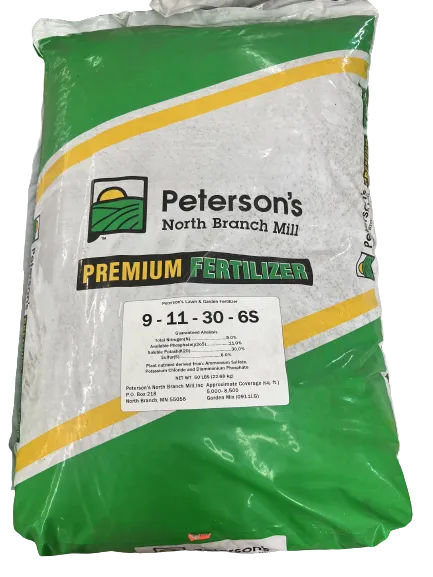
Milorganite Lawn Fertilizer
Milorganite
Slow-Release Nitrogen Fertilizer
Contains heat-dried microbes
May use on lawns, trees, shrubs, & flowers to promote growth
32lb bag covers approximately 2,500 sq. ft.
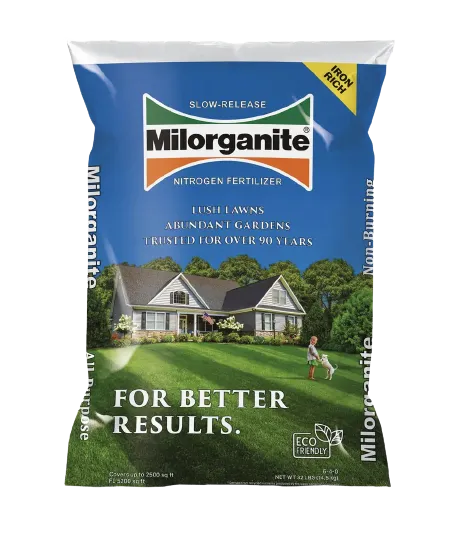
Award Turf Lawn Fertilizer
Broadleaf weed control
Contains Trimec herbicide
Controls over 200 broadleaf weeds including chick weed, dandelion, & poison ivy
Kills to the root
50lb bag covers 12,500 sq. ft.
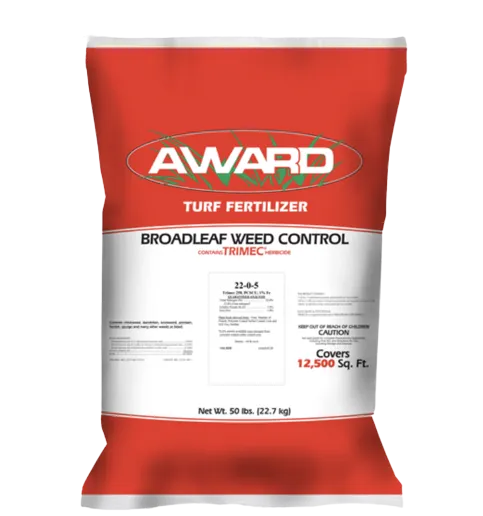
And So Much More!
Stop in today to see our full collection.
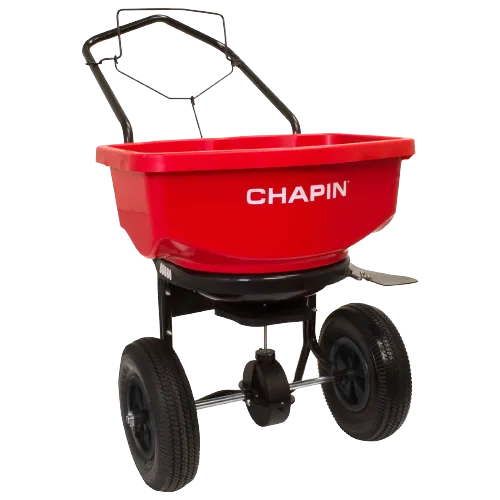
Grab a Chapin Fertilizer Spreader Today!
80lb Capacity
Powder Coated Steel Frame
Directional Control of Spread Pattern
Grab a Chapin Fertilizer Spreader Today!
80lb Capacity
Powder Coated Steel Frame
Directional Control of Spread Pattern

Mole & Gopher Treatment
We not only possess the solutions, but we also want to guide you through how to apply them correctly.
It's important to know that not every solution is suitable for every situation. Avoid wasting your money on unproven products.
Moles and gophers are distinct creatures, and it's possible to have both issues. Allow us to assist you in addressing them.
We carry a range of different products including:

Victor Mole & Gopher Repellent Spray
Contains 100% Castor Oil
Bottle attaches directly to hose for instant application
32 oz. bottle treats 10,000 sq. ft.

Motomco Mole Trap
Innovative and effective design
Double springs for maximum power and curved jaws for improved capture
Made from heavy duty, durable nylon

Martin's Gopher Bait 50
0.5% Strychnine Alkaloid
Treated grain product
Subsoil applications
One pound of bait will treat 1-8 acres
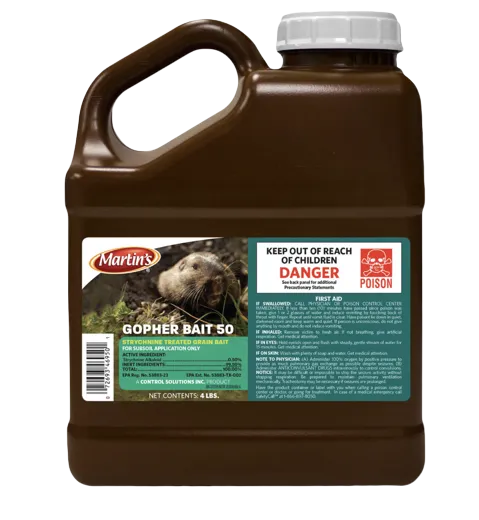
Victor Poison Peanuts
Attract and kill moles and gophers quickly
Cone tip design enables user to punch holes in active tunnels
The distinctive formula is appealing to moles and gophers, ensuring effective treatment.

Victor Poison Peanuts
Attract and kill moles and gophers quickly
Cone tip design enables user to punch holes in active tunnels
The distinctive formula is appealing to moles and gophers, ensuring effective treatment

Victor Mole & Gopher Repellent Spray
Contains 100% Castor Oil
Bottle attaches directly to hose for instant application
32 oz. bottle treats 10,000sq. ft.

Motomco Mole Trap
Innovative & effective design
Double springs for maximum power & curved jaws for improved capture
made from heavy duty, durable nylon

Martin's Gopher Bait 50
0.5% Strychnine Alkaloid
Treated grain product
Subsoil applications
One pound of bait will treat 1-8 acres

And So Much More!
Stop in today to see our full collection.
Pasture Seed and Fertilizer
Pasture Seed
Our pasture blends are specifically formulated to cater to the grazing needs of various animals and are completely free from endophytes.
For added flexibility, we offer individual seed bags that can be used to supplement the existing blends, planted separately, or combined to create a customized blend according to your preferences.
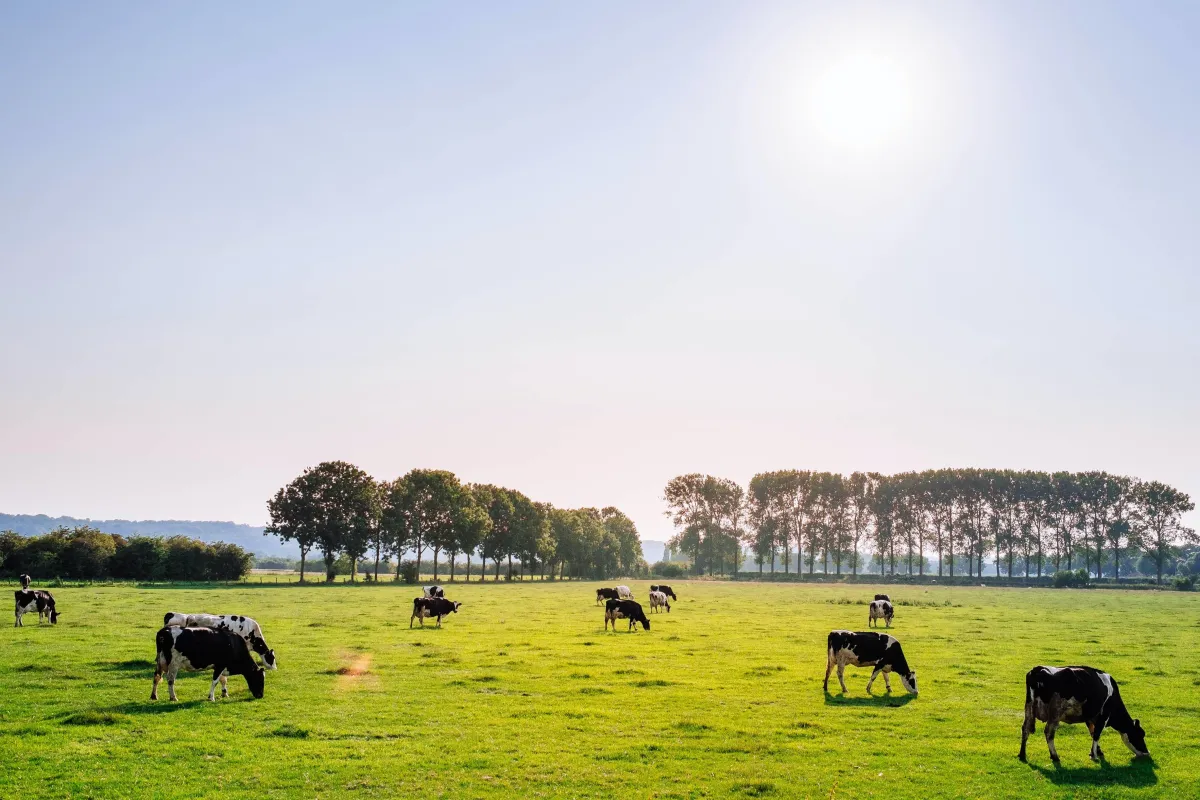
16-16-16 Pasture Fertilizer
50 lb bag
Covers 15,000 sq. ft.
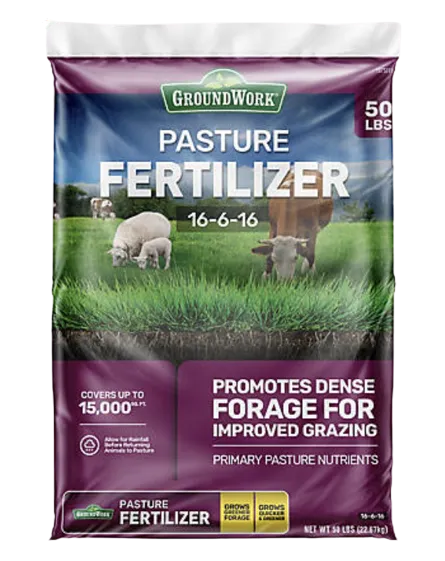
18-3-6 Pasture Fertilizer
50% of the nitrogen is derived from a slow-release form
16 fl oz
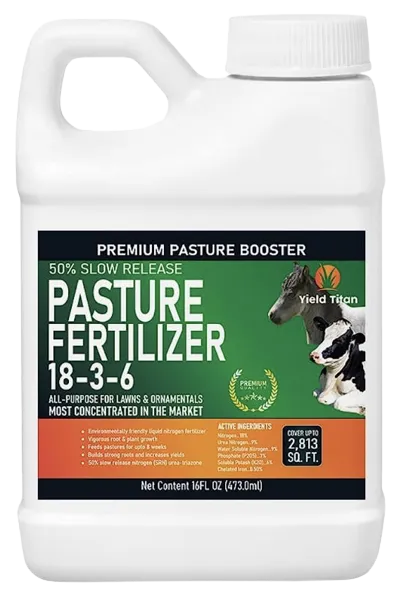
And So Much More!
Stop in today to see our full collection.
Martie's offers a variety of fertilizers
Available online
and at our store locations!
Elk River
Martie's Farm Services, 345 Jackson Ave NW, Elk River, MN 55330
Hours
Monday - Friday 8:00am - 5:30pm
Saturday - 8:00am - 3:00pm
Sunday - CLOSED
(763) 441-7550
Monticello
Martie's Farm Services, 100 Dundas Rd, Monticello, MN 55362
Hours
Monday - Friday 8:00am - 5:30pm
Saturday - 8:00am - 3:00pm
Sunday - CLOSED
(763) 295-4664
Martie's offers a variety of fertilizers
Available online
and at our store locations!
Store
Elk River: Martie's Farm Services, 345 Jackson Ave NW, Elk River, MN 55330
Monticello: Martie's Farm Services, 100 Dundas Rd, Monticello, MN 55362
Call
Elk River: (763) 441-7550
Monticello: (763) 295-4664
info@martiesfarmservice.com
Site
www.martiesfarmservice.com

Copyright © 2023. All right reserved